Open-type researchers A02: Creation (the latter period)
Ryoichi Arai
| Department of Applied Biology Faculty of Textile Science and Technology, Shinshu University Associate Professor, Ph. D. |
 |
|
| Role: | A02 Open-type Researcher | |
|---|---|---|
| Title: | Structural and functional analysis of self-assembling supramolecular complexes created from protein nano-building blocks, and design and construction of dynamical ordering of biomolecular systems | |
| Purpose: | Living organisms are maintained by various self-assembling biomolecules including proteins, nucleic acids, sugars, and lipids. Proteins and protein complexes are the most versatile biomacromolecules performing the complex and functional tasks as dynamical ordering systems in the living organisms. Rational design of artificial protein complexes and creation of dynamical ordering systems will contribute to various fields such as drug development, nanotechnology, and synthetic biology. Recently, we designed and created a “protein nanobuilding block (PN-Block)” by fusing an intermolecularly folded dimeric de novo protein WA20 and a trimeric foldon domain of T4 phage fibritin (Kobayashi, N., et al., 2015, J. Am. Chem. Soc., 137, 11285-11293, selected as a JACS cover article and JACS spotlight). The artificial PN-Blocks formed several distinctive types of self-assembling nanostructural complexes in multiples of 6-mer (6-mer, 12-mer, 18-mer, 24-mer), such as a barrel-like-shaped hexamer and tetrahedron-like-shaped dodecamer. The purposes of this study are structural and functional analysis of the self-assembling supramolecular PN-Block complexes, and design and construction of dynamical ordering of biomolecular systems. Furthermore, we also try design and creation of fine-tuned PN-block complexes effectively using protein engineering and computational approach. |
|
Ryota Iino
| Okazaki Institute for Integrative Bioscience, National Institutes of Natural Sciences Professor, Ph. D. |
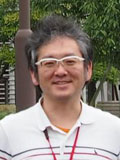 |
|
| Role: | A02 Open-type Researcher | |
|---|---|---|
| Title: | Creation of cyborg linear molecular motors hydrolyzing crystalline polysaccharides | |
| Purpose: | In this research project, we will create non-natural molecular motors with new functions by using domain exchange and fusion of different molecular motors, and hybridization with other biomolecules such as DNA. Especially, we will create new cellulases and chitinases which hydrolyze crystalline celluloses and chitins with higher rates and processivity than those of wild-type. We will also create a cyborg molecular motor which shows “synergy effect” by itself using fusion between the molecules moving opposite directions, and a motor which generates and captures the chain ends by itself using fusion between exo- and endo-type molecules. The created molecules will be functionally and structurally characterized with single-molecule analysis and X-ray crystallography to understand the detail of their operation mechanisms. | |
Masahiko Inouye
| Graduate School of Pharmaceutical Sciences, University of Toyama Professor, Ph. D. |
 |
|
| Role: | A02 Open-type Researcher | |
|---|---|---|
| Title: | Analysis of nucleic acid-related enzymatic reactions for artificial DNA analogues and their chemical deepening | |
| Co-Investigators (renkei-kenkyusha): | Hajime Abe Graduate School of Pharmaceutical Sciences, University of Toyama, Associate Professor, Ph. D |
|
| Junya Chiba Graduate School of Pharmaceutical Sciences, University of Toyama, Assistant Professor, Ph. D |
||
| Purpose: | Synthetic analogues of DNA with nonnatural structures occupy an important place in the research fields of various chemical and biological sciences and also in clinical medicine. Until recently, however, those analogues have contained only one or a few nonnatural bases linked with deoxyribose. We have reported an architecturally novel artificial DNA made exclusively of alkynyl C-nucleotides, possessing four types of pyrimidine-scaffolded nonnatural bases. The saccharide part was stereoselectively synthesized by our method and proved to have synthetic versatility, attributed to the acetylene function. In this project, we will newly design and synthesize nonnatural base sets that could be targets for naturally occurring enzymes related to DNA and RNA. Analyzing the enzymatic reactions and the structures of natural/nonnatural DNA hybrids and nonnatural DNA/natural protein complexes, we may extend our knowledge about the formation of order structures from DNAs and proteins. | |
Takafumi Ueno
| Graduate School of Bioscience and Biotechnology, Tokyo Institute of Technology Professor, Ph. D. |
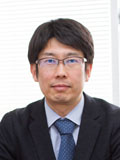 |
|
| Role: | A02 Open-type Researcher | |
|---|---|---|
| Title: | Construction of Protein needle from T4phage and molecular mechanism of the cell penetration | |
| Co-Investigator (renkei-kenkyusha): | Takayuki Uchihashi Kanazawa University, Professor, Ph.D |
|
| Tadaomi Furuta Tokyo Institute of Technology, Assistant Professor, Ph. D |
||
| Ryuji Kawano Tokyo University of Agriculture and Technol, Associate Professor, Ph. D |
||
| Purpose: | Crossing the barrier of cell membrane has been a challenge for the biomolecular transport process. Most of the synthetically designed cell penetrating materials incorporate positively charged grafts that endow cell permeability. On the contrary, natural molecular machines such as bacteriophage T4 employ a cell-puncturing needle consisting of a triple-stranded β-helical motif to puncture the cell membrane and inject DNA into the host cell during the initial step of the infection process. We have developed a protein needle constructed from the cell-puncturing device of the bacteriophage T4 for cell penetration and discovered that a recombinant protein needle consisting of an isolated triple-stranded β-helix motif of the bacteriophage T4 is able to spontaneously penetrate living cells. In this research project, we will elucidate the penetration mechanism by (1) HSAFM, (2) patch clamp technique, and (3) MD simulation. We believe that this study represents an important scientific advance in deriving a new concept for the design of novel cell penetrating materials inspired by the natural functions of biosupramolecular machineries. | |
Ryo Ohtani
| Department of Chemistry, Graduate School of Science and Technology, Kumamoto University Assistant professor, Ph. D. |
 |
|
| Role: | A02 Open-type Researcher | |
|---|---|---|
| Title: | Construction of artificial raft domain comprising functional coordination polymers in lipid bilayers | |
| Co-Investigator (renkei-kenkyusha): | Professor, Ph. D. Shinya Hayami Department of Chemistry, Graduate School of Science and Technology, Kumamoto University |
|
| Purpose: | In this research project, we develop domain architectures in fluid lipid bilayers by means of a coordination bond as a driving force, producing artificial raft domain incorporating functional coordination polymers (CPs). As a first step, we synthesize fabricated lipid complexes incorporating alkyl chains, which can expand two-dimensional coordination networks, and their structures and physical properties are investigated. By mixing the complexes with natural lipids and subsequent metal ions, we construct composite liposomes incorporating CP domains. The domain shape, size, and physical properties based on the CPs are characterized, leading to an establishment of “CP chemistry in lipid bilayers”. | |
Tsutomu Katayama
| Graduate School of Pharmaceutical Sciences, Kyushu University Professor, Ph. D. |
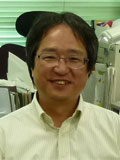 |
|
| Role: | A02 Open-type Researcher | |
|---|---|---|
| Title: | Development and analysis of integrated regulatory systems for the replication initiator DnaA protein | |
| Co-Investigator (renkei-kenkyusha): | Kazutoshi Kasho Graduate School of Pharmaceutical Sciences, Kyushu University, Assistant Professor, Ph. D |
|
| Hironori Kawakami Graduate School of Pharmaceutical Sciences, Kyushu University, Assistant Professor, Ph. D |
||
| Purpose: | For regulation of the initiation of chromosomal DNA replication, higher-order complexes consisting of multiple elements operate in an orderly integrated manner. In eubacteria, the replication initiator DnaA protein plays key roles in those regulatory systems. We have succeeded in construction of multiple in vitro reconstitution systems regarding E. coli chromosomal replication and its regulatory machinery, and have revealed important mechanisms of those systems. For example, we reconstructed in vitro DNA replication system depending on the chromosomal replication origin (oriC), negative regulation systems which inactivate DnaA in a timely manner, and positive regulation systems which re-activate DnaA in a timely manner. In this research project, we will attempt to develop higher in vitro reconstitution systems in which multiple regulatory systems operate in an orderly integrated manner. Analysis of molecular dynamics in those systems will enhance better understanding in mechanisms of those systems and will provide further insights for the principles of the dynamic ordering of biomolecular systems in DNA replication regulation. | |
Yukiko Kamiya
| Nagoya University, Graduate School of Engineering Associate Professor, Ph. D. |
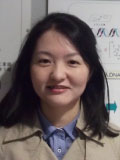 |
|
| Role: | A02 Open-type Researcher | |
|---|---|---|
| Title: | Reconstruction of cell-like system by using DNA and artificial oligonucleotides | |
| Purpose: | In biological systems, on-and-off and assembly of the interactions of biomolecules such as proteins and oligosaccharides generate macroscopic motions. One of the approaches to learn how it works is design of an artificial system emulating the biological phenomenon. In this research project, we will attempt to rebuild a cell-like system such as cell motility, vesicular budding and fusion systems. For this we will use DNA-DNA interaction because DNA is a unique biomolecule which shows sequence specific self-assembly. In addition, we will attempt to develop molecular tools for regulation of the interactions or assembly and disassembly of biomolecules by using our original artificial oligonucleotides. We expect that this research help us detail understanding of the principle mechanisms of cell functions governed by biomolecules and also bring us an inspiration for novel design of artificial bio-machines for new applications. | |
Kazunori Sugiyasu
| NMolecular Design & Function Group, National Institute for Materials Science Senior Researcher, Ph. D. |
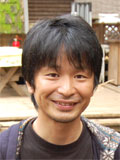 |
|
| Role: | A02 Open-type Researcher | |
|---|---|---|
| Title: | Differentiation of a Supramolecular Assembly: Control over Structure and Function on the basis of Energy Landscape | |
| Purpose: | During the course of our previous study conducted in this ‘Scientific Research on Innovative Areas’ in 2014-2015, we found a very unique time-dependent evolution of a supramolecular assembly, appearing as though a kinetically trapped supramolecular assembly has a capacity of differentiation. In this study, we investigate the mechanism at work behind this self-assembly process based on the concept of energy landscape. Then, we will further attempt to design functional materials using the unique time-evolution phenomenon. | |
Daisuke Suzuki
| Graduate School of Textile Science & Technology and Institute for Fiber Engineering, Interdisciplinary Cluster for Cutting Edge Research, Shinshu University Associate Professor, Ph. D. |
 |
|
| Role: | A02 Open-type Researcher | |
|---|---|---|
| Title: | Development of dynamic ordering of polymer colloid by using functional hydrogel microspheres | |
| Purpose: | In this project, we will develop polymer micro particles whose size and inter-particle interaction can be tuned autonomously and periodically. Using the polymer particles as a building block, artificially dynamic ordering system for forming higher dimensional ordered structures will be constructed. Taking advantage of direct observation of a single particle by microscope, we will summarize the relationship between the structure of a single polymer particle and the higher dimensional ordered structures constructed with the time evolution. | |
Shiroh Futaki
| Institute for Chemical Research Kyoto University Professor, Ph. D. |
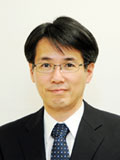 |
|
| Role: | A02 Open-type Researcher | |
|---|---|---|
| Title: | Peptide tools that induce curvatures and structural alterations in biomembranes | |
| Co-Investigator (renkei-kenkyusha): | Kenichi Kawano Institute for Chemical Research, Kyoto University, Assistant Professor, Ph. D |
|
| Purpose: | It has been known that membrane remodeling such as fission, fusion, protrusion and vesiculation, plays a critical role in cellular life, including membrane trafficking, movement, growth and division. The elucidation of proteins that can induce membrane curvature has highlighted their importance in the regulation of membrane remodeling. The ultimate goal of this study is to develop peptide tools that effectively induce/control structural alterations or curvatures in biomembranes. For this purpose, using epsin-1 (a protein involved in the formation of clathrin-coated pits)-derived curvature-inducing peptide as a starting material, we will investigate (I) the structurally important factors of the peptide on curvature induction, (II) the effect of peptide multimerization, and (III) the effect the attachment of a membrane anchoring moiety to the peptide. We also study the effect of curvature induction on live cell behaviors. | |
Tomoaki Matsuura
| Department of Biotechnology, Graduate School of Engineering, Osaka University Associate Professor, Ph. D. |
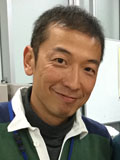 |
|
| Role: | A02 Open-type Researcher | |
|---|---|---|
| Title: | Introducing a photoregulation system of cell-free protein expression inside cell-size liposome and its application | |
| Purpose: | One of the strategies to study the dynamics of complex biological systems is to reconstitute the system of interest only with defined components. We have previously constructed an artificial cell, where membrane protein is synthesized inside a cell-size liposome using a reconstituted in vitro transcription-translation system, the PURE system. The method termed liposome display has been shown to be applicable not only for the directed evolution but also for the functional analysis of membrane proteins under cell mimicking environment. However, while the current method enables the simultaneous synthesis of multiple sequences, the timing of the expression cannot be regulated individually. High order function of biological molecule requires the temporal regulation of protein expression. We therefore aimed to introduce a temporal expression regulation system to liposome display method by mean of photo-switching, and apply the method for the analysis of translocation of membrane proteins across the lipid bilayer by translocon. | |
Hiroyuki Miyake
| Department of Chemistry, Graduate School of Science, Osaka City University Associate Professor, Ph. D. |
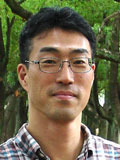 |
|
| Role: | A02 Open-type Researcher | |
|---|---|---|
| Title: | Ordering and dynamic conversion programming of supramolecular assembly based on dynamic metallopeptides | |
| Purpose: | In this research project, we will construct supramolecular dynamic assembly system based on chiral metal complexes with labile character and control assembly behaviors of natural protein by complexation with dynamic metal complexes. Since metal coordination chemistry has several attractive features including characteristic stereochemistries and dynamic ligand exchanges, their dynamic systems have potential to program both of space and time evolutions. Although we have demonstrated the dynamic helicity inversion of metal complexes and peptides, and the multi-molecular motion including elastic motion and helicity inversion of metal complexes, supramolecular assembly system is required to exhibit highly ordered function as observed in biological systems. We will further develop the dynamic control of natural aggregate protein to investigate mechanism of self-assembly of the protein. | |
